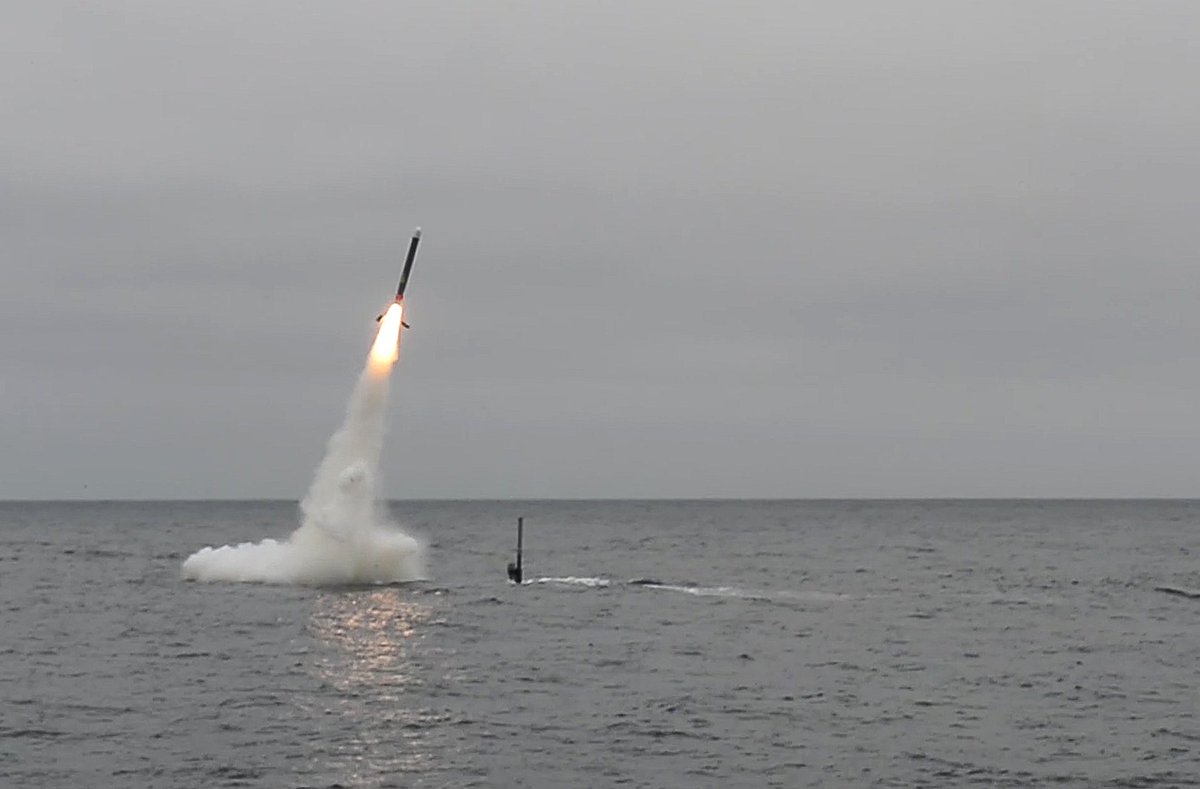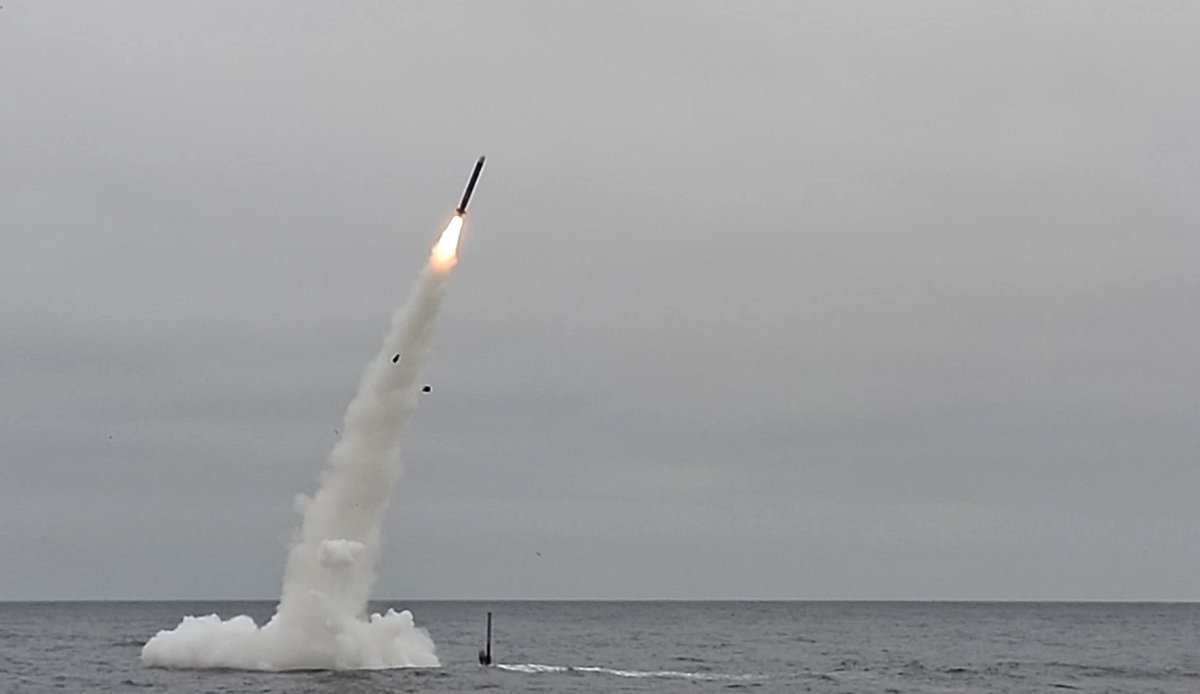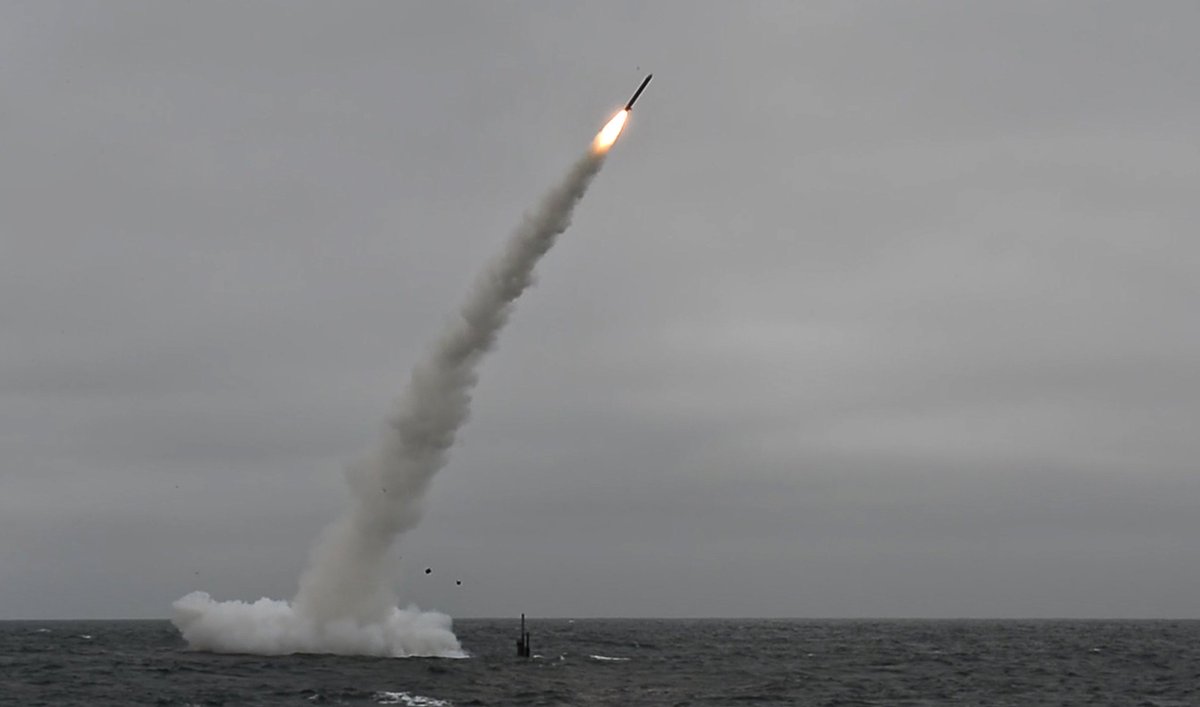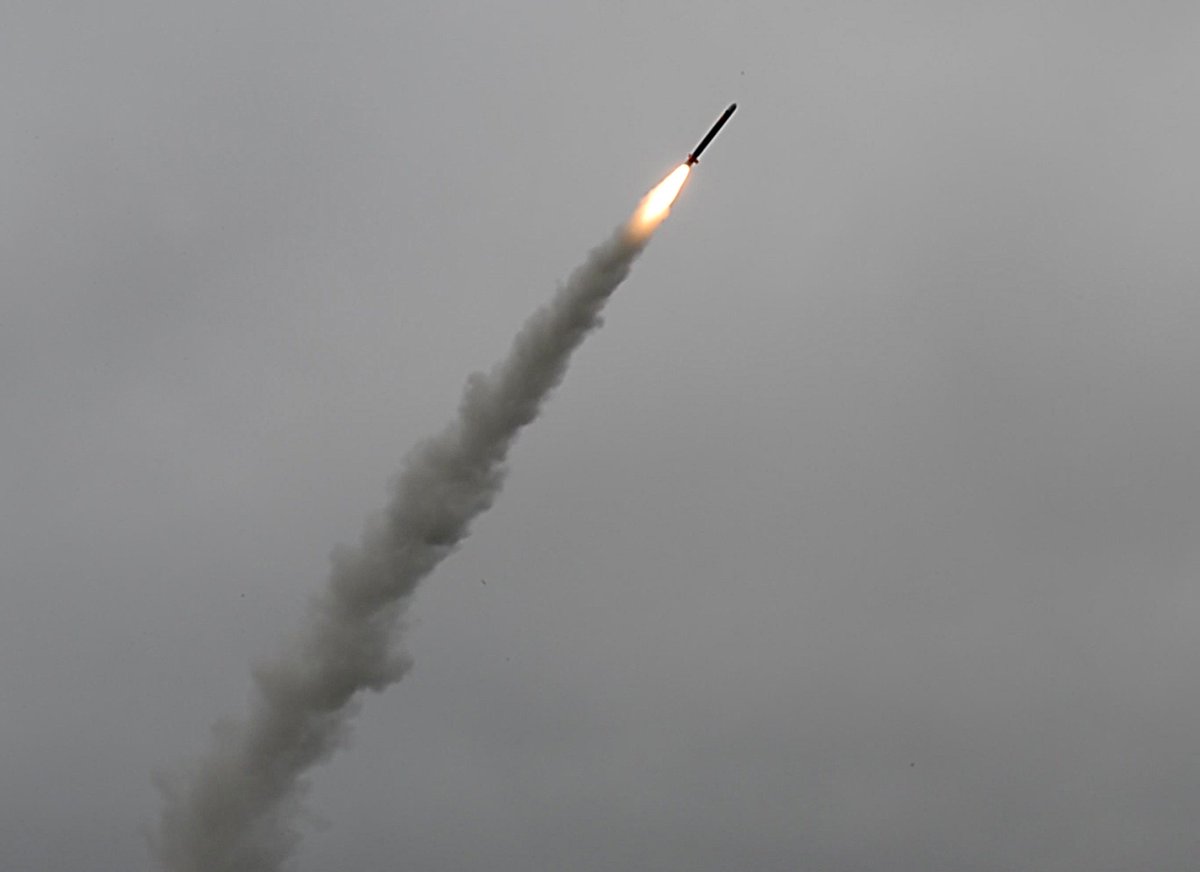You are using an out of date browser. It may not display this or other websites correctly.
You should upgrade or use an alternative browser.
You should upgrade or use an alternative browser.
US Military News, Reports, Data, etc.
- Thread starter tphuang
- Start date
Jura The idiot
General
Feb 23, 2018
Hellfire missile replacement cleared for production
nowI didn't get how many missiles in total they launched in tests, ...
Problems with Army’s future air-to-ground missile fixed ahead of production decision
Hellfire missile replacement cleared for production
The U.S. Army’s Hellfire missile replacement — — has been cleared for low-rate initial production, Lockheed Martin announced June 27.
The Lockheed Martin-developed JAGM is ultimately slated to replace the Hellfire missile — also a Lockheed product — on all platforms that fire them. It features a new dual-mode seeker and guidance system mated to a Hellfire missile.
Its seeker combines a semi-active laser with millimeter-wave radar sensors that give it the capability to go up against stationary and moving land and maritime targets in bad weather or obscured conditions.
JAGM has completed 10 limited-user test flights over several months, leading up to the Army’s decision.
The decision comes after a where JAGM was tested and qualified on the AH-64E Apache and the AH-1Z Viper attack helicopters.
JAGM will ultimately be qualified to fire from a wide variety of platforms .
Initial operational capability through the Army is expected in early 2019.
While the JAGM hardware demonstrated more than 95 percent reliability in flight testing, the Army had to work through some challenges surrounding the system, including cyber vulnerability, earlier on.
A Director of Operational Test and Evaluation report released at the beginning of the year found some issues with JAGM, including reports of the missile missing two targets in early testing.
Eighteen missiles were launched for an AH-64E, but four launches with a live warhead failed to detonate.
Issues were rectified from earlier tests, according to the Army.
TerraN_EmpirE
Tyrant King
Now comes the crital question, Hellfire III? I mean JAGM hardly strikes fear in the hearts of potential targets and Brimstone is taken
Jura The idiot
General
Apr 11, 2018
Virginia-class attack sub delivers late as US Navy aims to get program back on course
... related:since I now read it, I post this Interview: The Navy’s top submarine builder talks Virginia-class challenges, successes
...
Virginia-class attack sub delivers late as US Navy aims to get program back on course
The U.S. Navy’s latest has been delivered to the service nearly four months late, but the Navy thinks the program is getting back on a steady course with future boats.
Huntington Ingalls delivered the attack submarine Indiana to the Navy on Monday, with its commissioning slated for September, according to a Naval Sea Systems Command news release. The Indiana, designated SSN-789, was supposed to be delivered in February 2018, according to Navy budget documents, but supplier issues, a doubled production rate and cuts to production time from 84 months to 66 months contributed to delays for the Navy’s gold-star program in recent years.
In an April interview, the Navy’s top submarine program manager, Rear Adm. Michael Jabaley, told Defense News that all the Block III boats have delivered plus or minus 5 percent of the contracted span ― or about three months.
The Washington was delivered three months late. The Colorado, which was commissioned in March, was three weeks late. The Indiana should be the last boat in the series to be delivered late, Jabaley said.
“For SSN-790 (South Dakota), we’re working very hard to make sure that she delivers on time,” Jabaley said. “Right now, she is scheduled to deliver a little bit early to contract delivery date, which will be in August of this year.
“Then [SSN]-791 is the last boat of Block III. She’s scheduled to deliver next February, and we’re working very closely with the shipbuilders to ensure that we get her out on time as well.”
On issues related to the suppliers, Jabaley told Defense News that his office was pressing prime contractors Electric Boat and Huntington Ingalls Industries’ Newport News division to stay on top of it, especially as the Navy and Congress weigh building as many as three Virginia-class subs annually in years the Navy is not building Columbia-class subs.
“We have been stressing with Electric Boat and Newport News for the last three to four years that they need to do a better job in light of, again, this tremendous ramp up in construction work that’s coming and that they need to understand the supply chain,” Jabaley said.
“I look at it in terms of: What is the capacity of each of these suppliers? Will they be able to handle this change from two boats per year to as much as four and a half boats per year? What is the quality? Are they providing a quality product now? Is their process resilient, and how will it hold up under the additional work?”
Jabaley said the focus on the supplier base has shown some fruit, but he added that the Navy will continue to apply pressure as it moves into higher production rates going forward.
As the Navy moves from Block III Virginia-class subs to Block IV, the focus will be on driving down the production time from 66 to 60 months, then it will move onto the major redesign for Block V.
Block V includes the new payload module. Adding the new section of the boat ― designed to boost vertical launch capacity ― will drive construction times back up as the yards adjust to the new design.
Despite the redesign work, the Navy feels like its on a good path with Block V.
“Virginia originally was 42 percent when we started construction,” Jabaley said. “So we’re well beyond anything that we’ve ever accomplished before in terms of design-completed construction start. For the Virginia payload module, we’re tracking to about 75 to 80 percent completed-construction start, which is good.”
Jura The idiot
General
Tuesday at 7:41 AM
House sinks submarine proposal, OKs Pentagon spending bill with dual-carrier buy
... but here's a very interesting link, for example the reference to China:... just colorful pictures appear to be of interest anyway, LOL
...
House sinks submarine proposal, OKs Pentagon spending bill with dual-carrier buy
On 27 June 2018, the Boeing Co., St. Louis (MO) is awarded a USD 1,5 billion fixed-price-incentive-firm contract that provides for the production and delivery of 22 F/A-18E and six F/A-18F Super Hornets in support of the government of Kuwait.
The future Kuwaiti Air Force (KAF) aircraft are expected to be completed in January 2021.
Late March 2018, the KAF Super Hornet contract was finalized after the Kuwaiti Government approved the purchase in November 2016. At that time, Kuwait was considering a purchase of up to fourty jets to replace its current fleet of F/A-18C/Ds in a deal worth up to USD 10 billion. But eventually, the deal was split between Super Hornets and Typhoon
TerraN_EmpirE
Tyrant King
US Army’s interim short-range air defense solution crystallizes
By: 19 hours ago
WASHINGTON — The U.S. Army’s interim , which will urgently fill , has crystallized.
The Army had already decided the Interim Maneuver-Short-Range Air Defense system combat vehicle, but it has now chosen Leonardo DRS to supply a mission equipment package that will include Raytheon’s Stinger vehicle missile launcher, according to Col. Chuck Worshim, program manager for cruise missile defense systems with the Army’s Program Executive Office Missiles and Space, who spoke to Defense News on June 28.
General Dynamics Land Systems — which produces the Stryker — will be the platform integrator for the IM-SHORAD system, he added.
The Army went through a selection process through the Department of Defense Ordnance Technology Consortium to determine the best collection of vendors to build prototypes.
A Boeing-GDLS team was a front-runner for an interim SHORAD mission package, unveiling before any other vendor at the Space and Missile Defense Symposium in Huntsville, Alabama.
Using an Avenger system on top of the Stryker, which was the team’s solution, sought to take what was already in the Army’s inventory to create a system.
And a , last September saw more possibilities for the interim solution including Rafael’s Iron Dome and South Korean defense firm Hanwha’s Flying Tiger.
But a dark horse emerged at the Association of the U.S. Army’s Global Force Symposium, also in Huntsville, in March. Leonardo DRS showed an unassuming small-scale mock-up of its concept at its booth at the symposium that featured its partner Moog’s Reconfigurable Integrated-weapons Platform.
The platform would provide a choice of sites, direct-fire weapons and missiles, Ed House, DRS Land Systems’ business development manager, told Defense News at the show. The system would be able to integrate both Stinger and Longbow Hellfire missiles, requirements for the service’s IM-SHORAD solution.
It also would come equipped with a complement of direct-fire weapons and sites to include the M230 chain gun and the 7.62mm coaxial machine gun. But the solution also has non-kinetic defeat capabilities and Rada’s onboard multimission hemispheric radar.
And that dark horse has won the opportunity to provide the mission equipment package for the IM-SHORAD prototype program.
The system will also have Hellfire rails as well as an onboard sensor, according to Worshim.
The Army decided to choose DRS to provide the mission equipment package because of the flexibility of its reconfigurable turret, which allows for growth opportunities should the threat change or something else change that requires a new interceptor or another capability, Worshim said.
The solution also posed less intrusion to the existing Stryker platform, he added, and provided an increased level of protection as the crew reloads ammunition, which can be done under armor.
While the Avenger solution was deemed technically acceptable and met requirements, one of the reasons the Army decided against using the Avenger on Stryker as the solution was because the government felt it would require major modifications to the Stryker, according to Worshim.
The Army has a desire to keep the Stryker as common across the fleet as possible, Worshim said.
Boeing was also looking to the government to supply Avenger turrets, of which a limited amount of those exist readily in the service’s inventory, which would have been problematic when considering the Army’s goal to deliver 144 IM-SHORAD systems by fiscal 2022, he explained.
Now that vendors have been selected, the Army will move into a negotiation period expected to wrap up in mid- to late July. The service expects to officially award the contract to build nine prototypes by Aug. 31, but has the intention to possibly move that date up, Worshim said.
Once the contracts are solidified, DRS will provide the first mission equipment package, complete with a new digital Stinger missile launcher in February 2019. Then GDLS will fully integrate the SHORAD prototype by April 2019.
The final prototypes will be delivered to the service by the first quarter of fiscal 2020.
As the prototypes are coming along, the Army will conduct prototype testing to see if the systems are meeting requirements. “From there, the Army will decide if this solution truly meets requirements in this respect,” Worshim said. If the solution does meet requirements, production efforts to build 144 systems — a total of four battalions — will move forward.
The Army’s goal is to provide the first battery no later than the fourth quarter of 2020, but that will depend on funding. If funding is lower than expected, the Army will deliver the first platoon by about that time, according to Worshim.
The service has moved from receiving a directed requirement in late February 2018 to selecting vendors for the IM-SHORAD solution in just about four months, which, Worshim noted, is moving at “lightning speed” for a typical acquisition process.
The hope is the process to build an IM-SHORAD solution will be used as a model for Army procurement that incorporates the “fly before you buy” concept and creates a way to rapidly understand capabilities moving forward, he said.

The IM-Shorad is a close range Air defence system intended for Stryker BCT's and possibly other manouver elements of the Army to. Leonardo Won the Contract because of the way there system mounts to the vehicle the Other option from GDLS ( the maker of the Stryker) was based on an Avenger system. But the GDLS option basically cut a quarter of the hull out of the vehicle to mount the Avenger turret.
Now everything on Stryker is Interim, It was a vehicle created to fill gaps until a more permanent vehicle could enter service. As such Styker vehicle variants tend to be a bit slapped on.
Jura The idiot
General
good
US SSN760 launched a pair ot Land Attack off the southern coast while submerged on Tuesday 26 June. ANNAPOLIS returned to her homeport of San Diego in Feb. after a 2-year overhaul at Naval Shipyard Portsmouth NH




US SSN760 launched a pair ot Land Attack off the southern coast while submerged on Tuesday 26 June. ANNAPOLIS returned to her homeport of San Diego in Feb. after a 2-year overhaul at Naval Shipyard Portsmouth NH




Stryker Mobile SHORAD Launcher (MSL) is Stryker variant fitted with an Avenger turret for short-range air defense. The turret replaces the passenger compartment and in addition to the standard FIM-92 Stinger, it is being upgraded to fire AGM-114L Longbow Hellfire and AIM-9X Sidewinder

